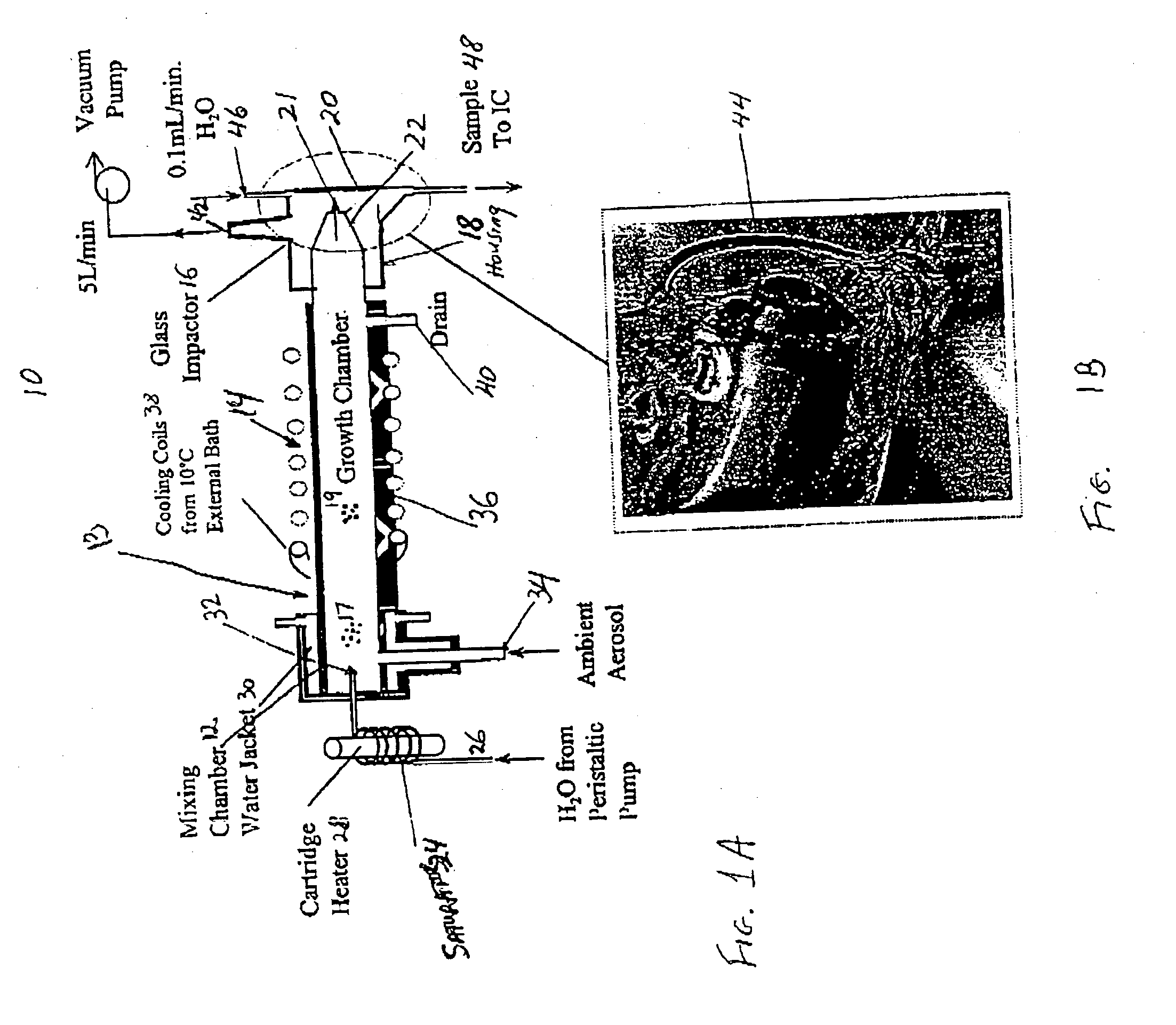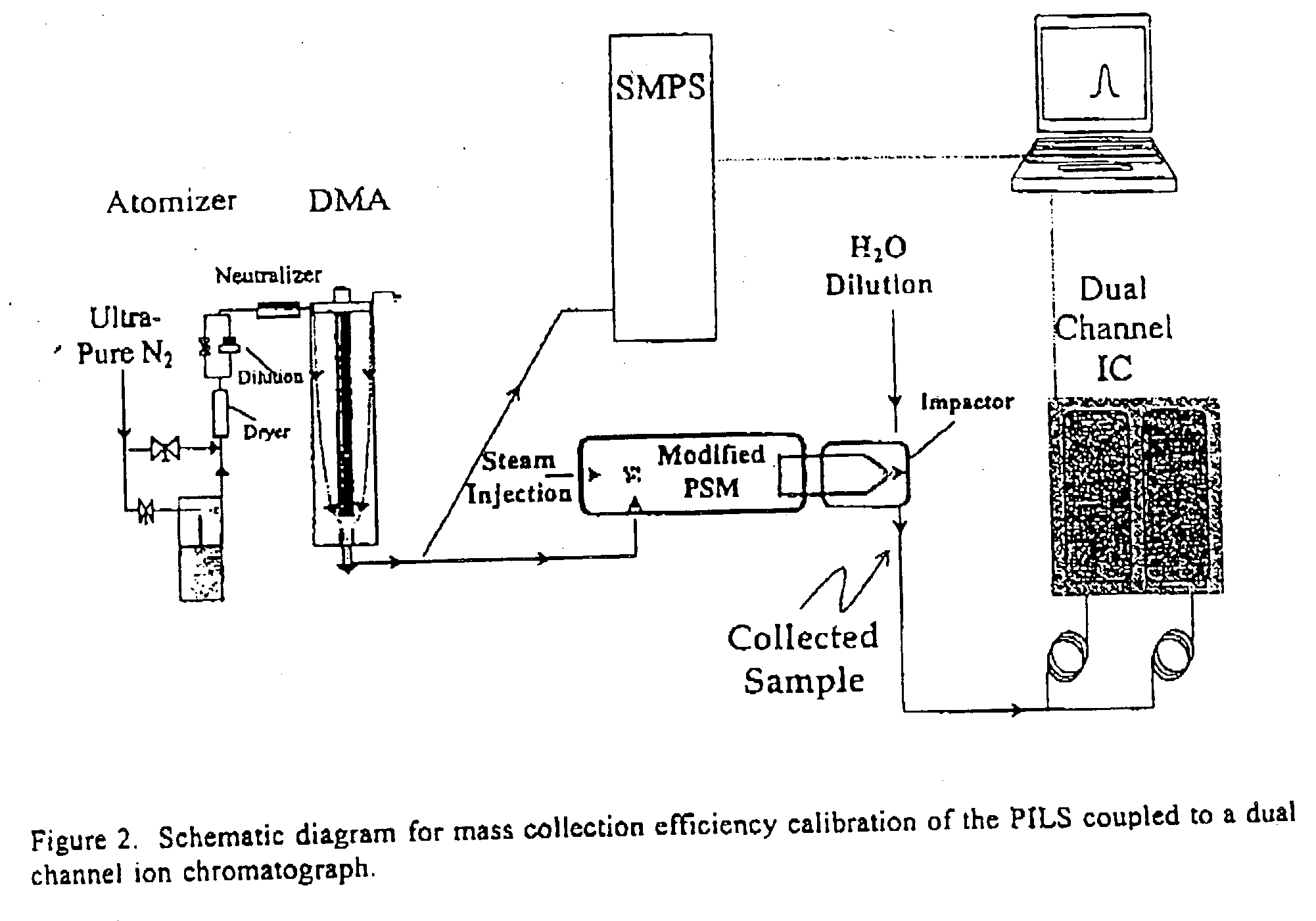Apparatus for rapid measurement of aerosol bulk chemical composition
a technology of aerosol and bulk chemical composition, which is applied in the direction of chemical methods analysis, instruments, separation processes, etc., can solve the problems of inability to immediately understand and interpret the results, inability to adjust the sampling strategy and protocol in the field, and long sampling intervals, so as to minimize the contribution of vapor condensate and improve the effect of droplet collection
- Summary
- Abstract
- Description
- Claims
- Application Information
AI Technical Summary
Benefits of technology
Problems solved by technology
Method used
Image
Examples
example 1
Results from the Atlanta EPA Supersite Study for PILS I
[0110] PILS I was tested during 1999 at the Atlanta EPA Supersite experiment where a large assembly of aerosol equipment was being tested for their performance. As the first EPA Supersite, our experiments were aimed at intercomparing various techniques for measuring chemical composition of particles smaller than 2.5 micrometer diameter, so-called PM2.5. A secondary goal was to study the chemical and physical properties of urban PM2.5 aerosol particles in the southeastern United States. Preliminary results showed that the PILS agreed well with other semi-continuous techniques, and were in general agreement with filter measurements of non-volatile species, such as sulfate.
[0111] The particles bearing diameter less than 2.5 micrometer (PM2.5) for sampling system, including the PILSI-IC, are shown in FIG. 7. The sampling inlet consisted of an inverted stainless steel tube connected to a 10 L min.sup.-3, 2.5 micrometer cut URG (Unive...
example 2
Calibration Results of Particle Collection Efficiency for PILS II
[0116] In order to calibrate the size-dependant collection efficiency of PILS II, two standard methods of particle generation were needed to cover the large particle size range as shown in FIG. 12. For particle diameters Dp>1 .mu.m, a vibrating orifice aerosol generator (VOAG) (VOAG 3450, TSI Inc, St Paul Minn.) produced aerosols out of a solution of olive oil (0.1-10%) and propanol, tagged with a small amount of flouresceine (0.01%, Aldrich Chemical). The size of the aerosols generated depended on the fraction of olive oil in solution and the VOAG operating frequency. The VOAG illustrated in FIG. 12 was turned upside-down to maximize transport of large particles in about 2 l min.sup.-1 of nitrogen dilution air. An aerodynamic particle sizer (APS) located just before the PILS, monitored the diameter of the generated aerosol. To accommodate the total flow of PILS II and APS, 18 l min.sup.-1 of dried ambient room air was...
PUM
| Property | Measurement | Unit |
|---|---|---|
| diameter | aaaaa | aaaaa |
| length | aaaaa | aaaaa |
| diameter | aaaaa | aaaaa |
Abstract
Description
Claims
Application Information
 Login to View More
Login to View More - R&D
- Intellectual Property
- Life Sciences
- Materials
- Tech Scout
- Unparalleled Data Quality
- Higher Quality Content
- 60% Fewer Hallucinations
Browse by: Latest US Patents, China's latest patents, Technical Efficacy Thesaurus, Application Domain, Technology Topic, Popular Technical Reports.
© 2025 PatSnap. All rights reserved.Legal|Privacy policy|Modern Slavery Act Transparency Statement|Sitemap|About US| Contact US: help@patsnap.com



